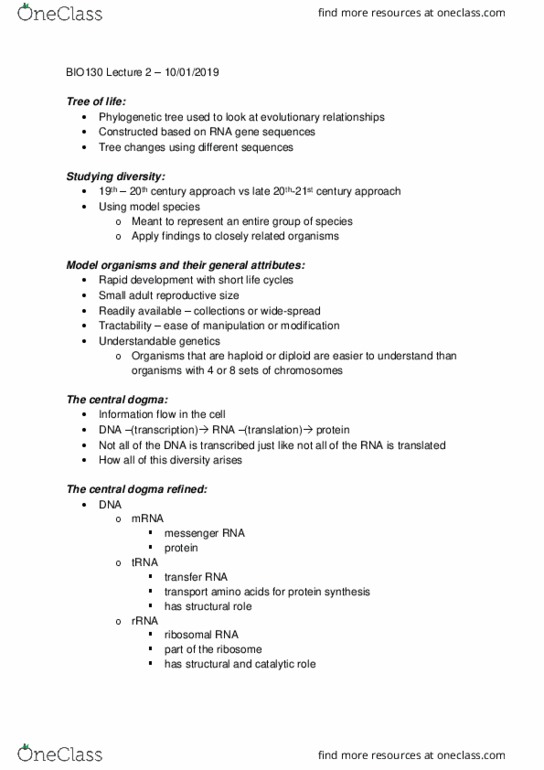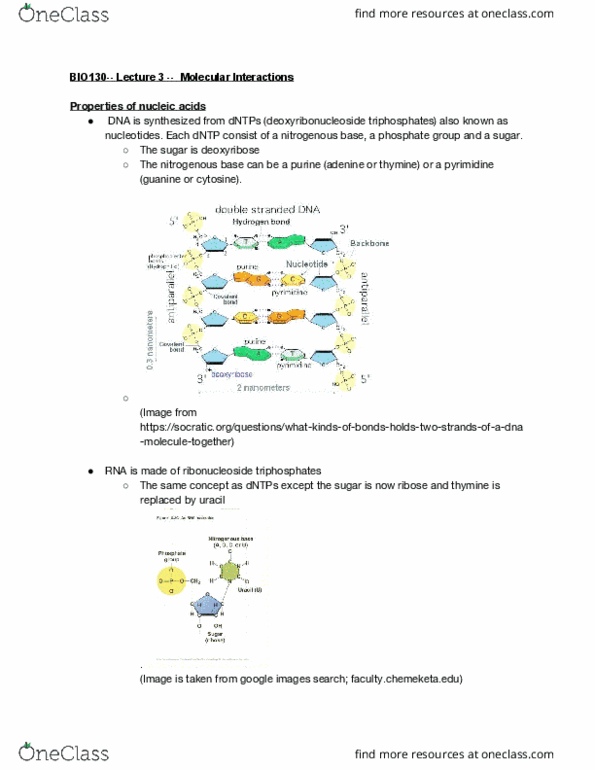BIO130H1 Lecture 2: Model Organisms, the Central Dogma & Nucleic Acids
BIO130H1 verified notes
2/26View all
Document Summary
Tree of life: phylogenetic tree used to look at evolutionary relationships, constructed based on rna gene sequences, tree changes using different sequences. Studying diversity: 19th 20th century approach vs late 20th-21st century approach, using model species, meant to represent an entire group of species, apply findings to closely related organisms. Information flow in the cell: dna (transcription) rna (translation) protein, not all of the dna is transcribed just like not all of the rna is translated, how all of this diversity arises. The central dogma refined: dna, mrna, messenger rna, protein trna, has structural role transfer rna transport amino acids for protein synthesis, rrna, part of the ribosome, has structural and catalytic role ribosomal rna. Interactome protein-protein interactions in the cell: these molecules can be things such as pyruvate in glycolysis, waste molecules, etc, much smaller than proteins, phenome includes: genome, transcriptome, proteome, interactome, metabolome + observable characteristics.





